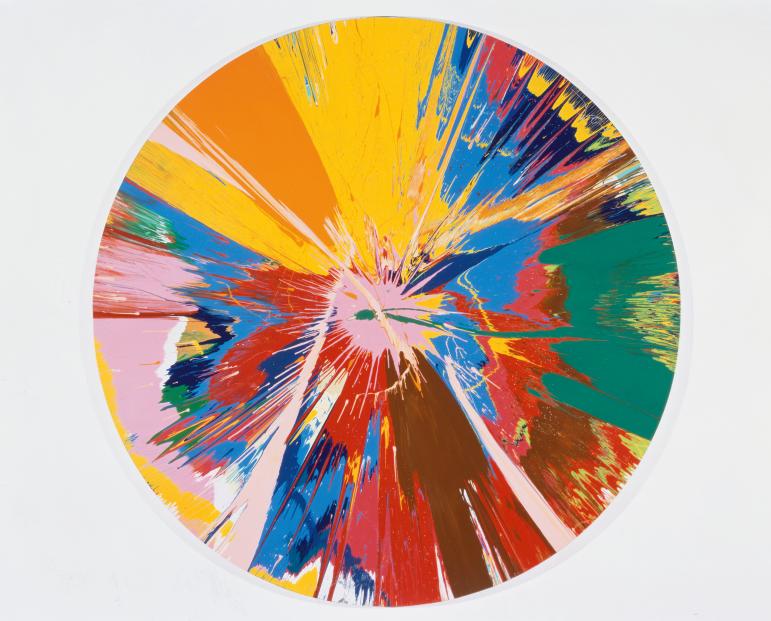
Many of his works are widely recognized, from the shark suspended in formaldehyde, (1991), his spot, spin and butterfly paintings, through to later works such as the diamond encrusted skull:For the Love of God (2007). Of the latter, the art historian Rudi Fuchs has said, “The skull is out of this world, celestial almost. At the same time it represents death as something infinitely more relentless. Compared to the tearful sadness of a vanitas scene, the diamond skull is glory itself.”
Throughout his work, Hirst takes a direct and challenging approach to ideas about existence. His work calls into question our awareness and convictions about the boundaries that separate desire and fear, life and death, reason and faith, love and hate. Hirst uses the tools and iconography of science and religion, creating sculptures and paintings whose beauty and intensity offer the viewer insight into art that transcends our familiar understanding of those domains. “There [are] four important things in life: religion, love, art and science,” the artist has said. “At their best, they’re all just tools to help you find a path through the darkness. None of them really work that well, but they help. Of them all, science seems to be the one right now. Like religion, it provides the glimmer of hope that maybe it will be all right in the end…”
Damien Hirst lives and works in Devon and London, U.K. He was included in the 1992 Young British Artists exhibition at Saatchi Gallery, London and in 1995 he won the Turner Prize. Solo exhibitions of Hirst’s work have been held at Museo Archeologico Nazionale, Naples (2004), Astrup Fearnley Museet fur Moderne Kunst, Oslo (2005), Rijksmuseum, Amsterdam (2008), Galerie Rudolfinum, Prague (2009), The Wallace Collection, London (2009–10), the Oceanographic Museum, Monaco (2010), the Museo di Palazzo Vecchio, Florence (2010) and Tate Modern, London (2012). His work is represented in major public and private collections around the world.

Nenhum comentário:
Postar um comentário